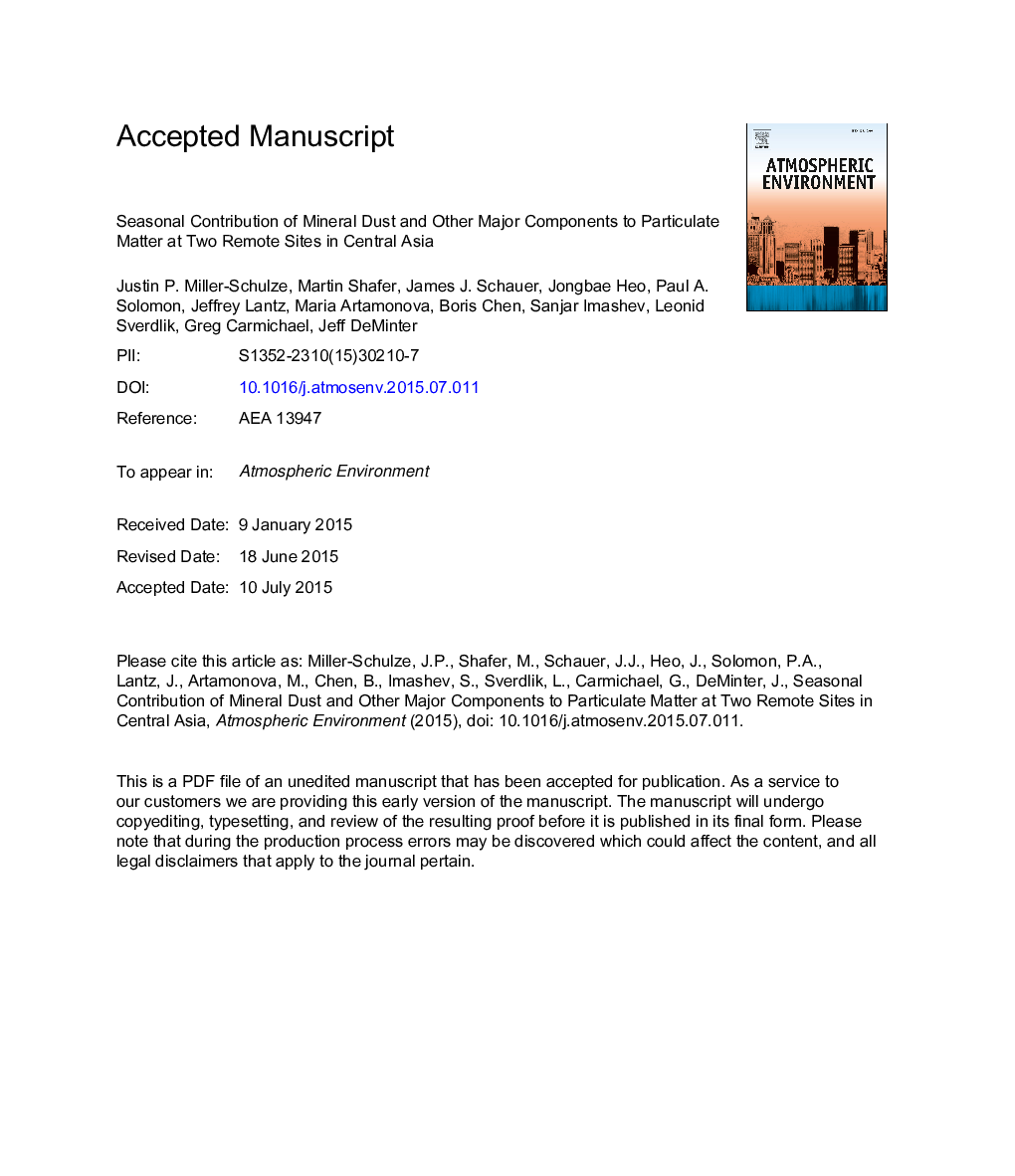| Article ID | Journal | Published Year | Pages | File Type |
|---|---|---|---|---|
| 6337607 | Atmospheric Environment | 2015 | 66 Pages |
Abstract
Results indicate that at both sites, mineral dust (as approximated by the “dust oxide” model) and organic matter (OM) were the dominant contributors to PM10 and PM2.5. Mineral dust was a more significant contributor to the coarse PM (PM10-2.5) during high event samples at both sites, although the relative contribution is greater at the Lidar site (average ± standard deviation = 42 ± 29%) as compared with the Bishkek site (26 ± 16%). Principal Components Analysis (PCA) was performed using data from both sites, and PCA indicated that mineral dust explained the majority of the variance in PM concentrations, and that the major apportioned factors of PM10 and PM2.5 were chemically similar between sites.
Related Topics
Physical Sciences and Engineering
Earth and Planetary Sciences
Atmospheric Science
Authors
Justin P. Miller-Schulze, Martin Shafer, James J. Schauer, Jongbae Heo, Paul A. Solomon, Jeffrey Lantz, Maria Artamonova, Boris Chen, Sanjar Imashev, Leonid Sverdlik, Greg Carmichael, Jeff DeMinter,
